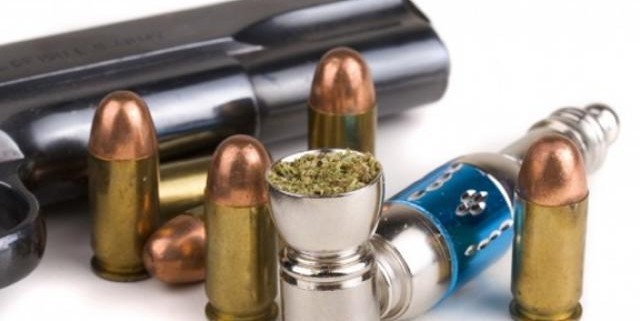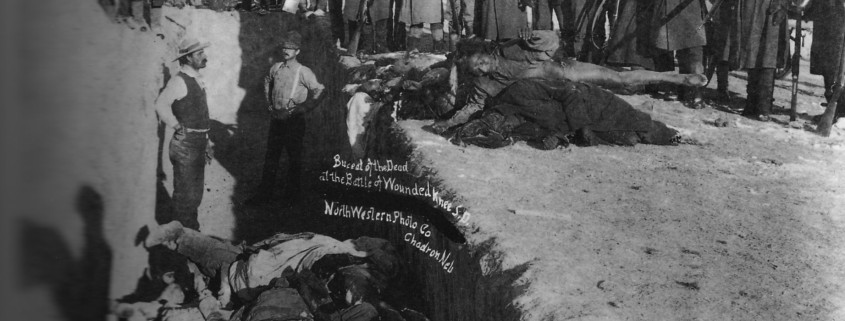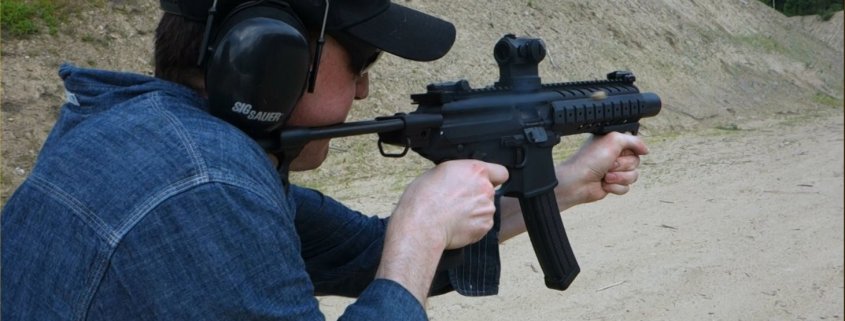In an open letter to the BATFE, Dimitrios Karras of Ares Armor wrote a letter thanking them for defining what a weapon is, what a receiver is, and excoriates them on mistakes they made in their recently published 2015-01 ruling. The entire letter is published below along with the crayon version that is sure to be a big hit in the pro liberty community.
The Honorable B. Todd Jones
Director Bureau of Alcohol, Tobacco, Firearms, and Explosives
99 New York Avenue, N.E.
Washington, D.C. 20226
Dear Director Jones,
I have read ATF Rul. 2015-1 which was intended to clarify your position on several issues. I would like to thank you for your indirect admission that a firearm receiver is not a “receiver”, as defined by the GCA of 1968, until it can house all of the necessary parts that it is intended to house. I know this was not your intent. However, your words are very clear.
PART 1. Statements and Admissions
- ) A “frame or receiver” and a “weapon”, are separately and uniquely defined in the GCA of 1968.
You correctly state on page 2 the following,
Section 921(a)(3), defines a “firearm,” in relevant part, as both a “weapon … which will or is designed to or may readily be converted to expel a projectile by the action of an explosive” (921(a)(3)(A)), and the “frame or receiver of any such weapon”
You correctly observe that both a “weapon” and the “frame or receiver” of a weapon are defined separately in the GCA. Thank you for this admission!
- ) The “may readily be converted” phrase only applies to “weapon” and not to “receiver”.
As can be seen by your admission, these are defined separately. Therefore, you are also admitting that “may readily be converted” applies only to “weapon” and not to “frame or receiver”. Thank you for this admission!
- ) The meaning of the word “manufacture” is “to make into a product suitable for use.”
On page 3 you correctly quote the Broughman Case,
See Broughman at 675 (“[T]he plain and ordinary meaning of the word ‘manufacture’ is ‘to make into a product suitable for use.’” (quoting Merriam-Webster Online Dictionary (2010))…
You love to quote court cases that agree with you and ignore ones that don’t agree. However, thank you for this admission!
- ) An object that is NOT suitable for use as a “receiver” is NOT classified as a “receiver”.
On page 2 and 3 you state the following,
“…it generally requires substantial additional machining before it can accommodate fire control components such as a trigger, hammer, or sear…”
“…incapable of being assembled into a weapon…”
And my personal favorite quote on page 3,
“ATF Ruling 2010-10 assumes that a licensed dealer-gunsmiths would perform certain activities on articles ALREADY classified as frames or receivers (i.e., no machining or other processes required to allow it to be used to assemble a weapon)… *emphasis added
Here, you have very clearly stated that an item that requires “machining or other processes” before it is suitable for use in assembling a weapon would not ALREADY be classified as a frame or receiver. THANK YOU FOR THIS GIGANTIC ADMISSION!
- ) Indexing marks DO NOT make a random object into a “receiver”.
On page 3, you incorrectly and in pompous contempt of the Court make the following statement,
Although such an article may be classified as a “receiver” when it is indexed…
As you are fully aware, this is direct conflict with UNITED STATES v. PRINCE. The ATF has already lost this argument in Federal Court. I have mentioned this case in previous communication with you. It is fully on record that you are aware of this case and its implications. Your choice to ignore this case is despicable at best.
“The court finds that the metal flat shipped to Prince is not a firearm. The court carefully considered the expert testimony of Agent Adam Galbraith, and reviewed the material submitted by the government concerning ATF opinions. However, the court simply does not believe that a flat piece of metal with laser perforations and holes constitutes a “receiver,” i.e., a “firearm.” Rather, the flat piece of metal is somewhat akin to a piece of paper with lines drawn on it as a guide to make a paper airplane. Although making the paper airplane might be the intended use, it is not an airplane until it is properly folded. Until that time, it is a patterned piece of paper. Simply put, this court has no evidentiary or legal basis for holding that a flat piece of metal with laser perforations and some holes constitutes, ultimately, a “firearm.””
http://caselaw.findlaw.com/us-10th-circuit/1506044.html
PART 2. The Lunacy Of Your Conclusions
On pages 4 and 5 you state the following,
However, when a licensed gunsmith takes in a frame or receiver to perform machining or other manufacturing process, that gunsmith “distributes” a firearm to the customer upon return because that manufacturing activity results in the making of a different “frame or receiver” and also a “weapon…which will or is designed to or may readily be converted to expel a projectile” –both defined separately as a “firearm” under the GCA.
You somehow confusingly conclude that even though both terms are defined separately, a “receiver” is a “weapon…which will or is designed to or may readily be converted to expel a projectile”
Let me ask one simple question… If a “receiver” is a “weapon”, why are they defined separately and uniquely in the GCA as firearms?
A “receiver” by itself cannot be “readily converted to expel a projectile” as the receiver by itself lacks the necessary parts. I would love to hand you a receiver and ask you to readily convert it into a weapon. Perhaps you would do that hand waiving Jedi-Mind trick thing you did to Congress when you were asked about why you raided my business!
A receiver is PART of a weapon. A receiver is NOT a weapon by itself, as it is clearly defined separately and uniquely in the GCA per your own admission.
Riddle me this one Batman… If a “receiver” is a “weapon” then it must have an individual part of itself that is a “receiver”, which would be classified separately from it as a “firearm”… So where exactly is it that I can buy this mysterious “receiver, of a receiver, of a receiver, of a receiver” that you refer to?
PART 3. The Common Sense Conclusion Based On Your Statements.
- ) A “frame or receiver” and a “weapon”, are separately and uniquely defined in the GCA of 1968.
- ) The “may readily be converted” phrase only applies to “weapon” and not to “receiver”.
- ) The meaning of the word “manufacture” is “to make into a product suitable for use.”
- ) An object that is NOT suitable for use as a “receiver” is NOT classified as a “receiver”.
- ) Indexing marks DO NOT make a random object into a “receiver”.
I conclude, based off of your statements, that one cannot be charged with a crime of “manufacturing” (make into a product suitable for use) an AR “receiver” ( “[t]hat part of a firearm which provides housing for the hammer, bolt or breechblock, and firing mechanism, and which is usually threaded at its forward portion to receive the barrel.”) if that “receiver” does not provide housing for any of the intended mechanisms.
I would like to thank you for your clarification that NOT drilling the through holes for the fire-control group (safety selector, trigger pin, and hammer pin) would be sufficient to have NOT manufactured a “receiver”.
Just to sink your own words in one more time, I will provide you with your quote from page 3 again,
“ATF Ruling 2010-10 assumes that a licensed dealer-gunsmiths would perform certain activities on articles ALREADY classified as frames or receivers (i.e., no machining or other processes required to allow it to be used to assemble a weapon)… *emphasis added
I expect that you will issue a letter in response to this stating that one can manufacture a 99% receiver (missing only the 3 holes for the fire control group) and not be charged with “manufacturing a ‘firearm’”.
I salute you on your efforts of making the hobby of building firearms at home easier!
To make things easier for you and your agents to understand, I have commissioned these concepts to be drawn in crayon. I have attached this drawing to this letter. You are welcome.
You block, you stone, you worse than senseless thing,
Dimitrios Karras
One of Your Restless Villagers
Semper Fi!
View the ‘Crayon Version’








